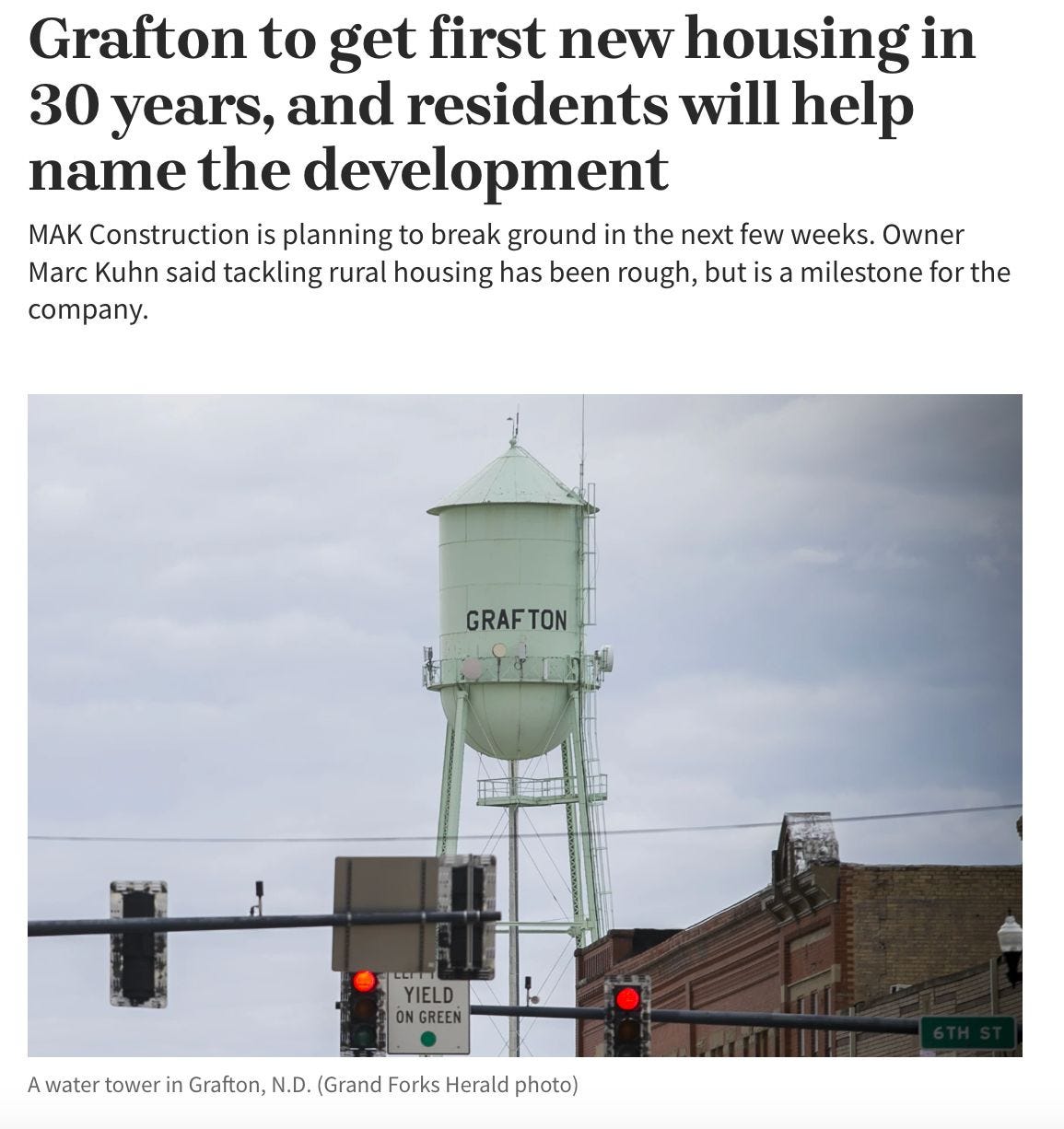What It Costs to Build a 72-Unit Apartment in a Rural Town
An inside look at our latest apartment development in North Dakota — hard costs, soft costs, and how we make the numbers work for us
Editorial Note
I love sharing practical knowledge that actually moves the needle for real estate developers and business founders. The kind of advice that helps you think clearly and act decisively.
Marc Kuhn is a machine when it comes to that kind of writing. His breakdowns are sharp, straightforward, and packed with insight you can apply right away.
I chose this article because it tackles something many developers struggle to get right: the true cost of building. Marc lays out exactly what it took to develop a 72-unit project, with real numbers and smart context that’s hard to find elsewhere.
As a developer myself, I appreciate how clearly and generously he lays it all out. You can explore more of his work over at Unfollow the Herd, where he publishes weekly lessons on business, real estate, and thinking independently.
Big thanks to Marc for allowing me to share this piece.
Enjoy the read and take notes. Juan Salas-Romer
“What does it cost to build a 72-unit apartment building?”
It’s the question I get asked the most when I post about our apartment developments.
So in today’s issue, I’m going to show you.
We’re currently building two 36-unit apartment buildings (72 units total) in Grafton, North Dakota, a rural town that hasn’t seen new multifamily construction in over 30 years.
This isn’t a hypothetical case study. It’s a real project that’s already under construction.
I’ll break down:
What we paid (or didn’t pay) for land
How we budgeted hard and soft costs
What each line item means in the real world
And how we turn a construction-heavy deal into long-term income and ownership
Let’s get into it.
The Land: Why We Paid $0 for Dirt
We’re in a rural market.
In small towns like this, housing demand is high, but supply is decades behind. And local governments know that.
To get projects like this built, cities will often donate land to qualified developers.
That’s exactly what happened here.
We secured the site, appraised at around $350,000, at no cost, as part of a state-subsidized effort to bring housing back to the region.
That’s one of the big advantages of building in the Midwest.
In big cities, land costs kill deals. In smaller towns, land is leverage.
Check out this breakdown on YouTube if you prefer video.
Soft Costs: What Most Builders Forget to Budget
These are the line items that sneak up on first-time developers.
They’re not sexy.
They don’t show up on site.
But they’ll break your project if you don’t plan for them.
Here’s how we underwrote our soft costs:
Architects & Engineers – $110,000
Plans, site layout, structural calcs — this is your pre-construction brain trust. We keep this tight but don’t cut corners.
Developer Fee – $880,000
As the developer, we earn a fee for putting the deal together — but most of that gets reinvested as equity. It aligns us with our LPs and builds long-term wealth.
Legal & Accounting – $15,000
Entity docs, partnership agreements, deal structure. This is where your structure lives or dies. Keep it clean, especially with multiple partners or LPs involved.
Reserves – $200,000
We underwrite 4–6 months of expenses (including debt service) into a reserve account. You don’t want to be scrambling for cash during lease-up.
Signage & Monument – $15,000
Small line item, big visual impact. Tenants want to live somewhere that looks and feels professional.
Builder’s Risk Insurance – $38,000
Covers damage during construction — from weather, vandalism, even fire. If the building blows over before lease-up, this policy saves the project.
FF&E – $50,000
Rugs, lobby furniture, hallway fixtures. These aren’t just aesthetics — they set the tone for the tenant experience.
Lease-Up Carry – $420,000
Construction takes 12–14 months. Then we give ourselves another 10–12 months to lease it up. That’s 2 years of interest carry to budget before stabilization.
Contingency – $258,000 (3%)
Every project needs margin for the unknown. We used 2% on construction, 1% on soft costs. Simple project, but we don’t skip this.





